#moldmaking silicone
Text
Testing silicone mold release methods! Let’s find out what works best, together!
24 notes
·
View notes
Text

#candleart#candles#diy#wax#wax artist#molds#moldmaking#soap art#chocolate#chocolate art#design#etsyshop#etsy#handmade#handcrafted#silicone#fondant#food art
4 notes
·
View notes
Photo
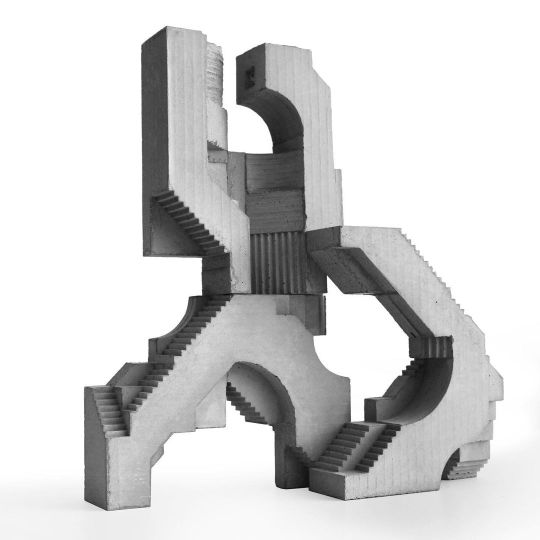
Infrastructures 2016 . . . . . #mold #moldmaking #casting #molding #silicon #silicone #wax #smoothon #concrete #concreteart #block #fineart #contemporaryart #modular #modernart #puzzle #sculpture #contemporarysculpture #workshop #architectural #modernarchitecture #brutalism #concretearchitecture #architecturemodel #3dmodel #archilovers https://www.instagram.com/p/CialIncLWnG/?igshid=NGJjMDIxMWI=
#mold#moldmaking#casting#molding#silicon#silicone#wax#smoothon#concrete#concreteart#block#fineart#contemporaryart#modular#modernart#puzzle#sculpture#contemporarysculpture#workshop#architectural#modernarchitecture#brutalism#concretearchitecture#architecturemodel#3dmodel#archilovers
13 notes
·
View notes
Text
Mold Making: Types of Molds
When it comes to creating complex shapes, molds are indispensable tools that can help get the job done. In this article, we'll explore the different types of molds used in the industry, including their applications, benefits, and limitations.
.From traditional methods to cutting-edge technologies, mold making comes in many forms. Different types of molds require various techniques, processes, materials, and methods. Understanding the intricacies of each type of mold is crucial for achieving the desired outcome in your molding project.
Whether you're a seasoned veteran or a novice in mold making, this article will provide a comprehensive guide to the different types of molds and help you identify which type is most suitable for your project.
#Mold Making#moldmaking#alginate#life casting#resin casting#silicone mold#siliconerubber#alginates#polyurethanes#resincasting
1 note
·
View note
Text

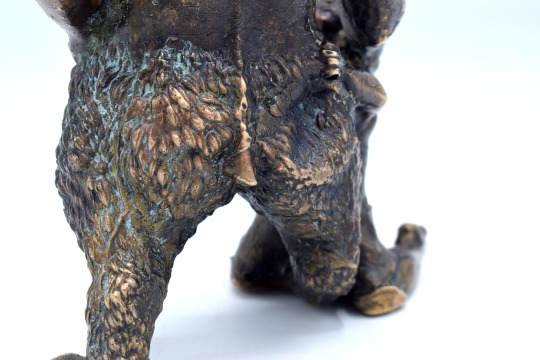



T4TM (Theseus4TheMinotaur)
lost wax cast bronze, patina & paste wax
2023
(process photos & info under cut <3)
my minotaur boy!! pls click on the photos for higher res! my thesis is focusing on trans men and creatures (how original ik) and this was last semester's final. i spent a lot of time looking at sculptures of the theseus/minotaur story, and yknow? a LOT of them are erotic! i'm pretty sure i saw some of them on tumblr a decade ago, and that's led to this now!
as you'll notice, the minotaur has a big t-dick! i wanted to give him breasts and an enlarged clitoris to present a very masculine trans figure. the boy on the bottom is also trans because i say so . the piece is about looking up to older, bigger, hairier trans men and seeing something awe-inspiring and beautiful. the minotaur was locked up by a cruel father for being different, and i think modern adaptations tend towards a sympathetic asterion (his name in one version)
making this piece was. so much effort. it took me about 3 months to get it all together - from clay model (plasticine) to 3D print to silicone mold to wax cast, and finally bronze pour into the shell mold. and then a TON of filing, sanding, dremel-ing, and various other metalworking techniques that probably took years off my life.
i started with sketches and made theeeeeee ugliest model ever:

then used a 3D scanner to get it digital, then spent a goooood month or two making him pretty in blender! then i spent an agonizing few weeks trying to get it print-ready, and fiiiiiinally did

^^^ an early resin printed draft of the model - you can see in the final that i added lots to theseus after some feedback, but sadly the nosering broke off every time i cast it so i just. let that be <3
then came the moldmaking, and then the wax dipping!! the yellow stuff is shell mold (ground up ceramic bits and algae soup, sticks to the wax, then silica sand in varying sizes on top) which gets the wax melted out, and bronze poured in!

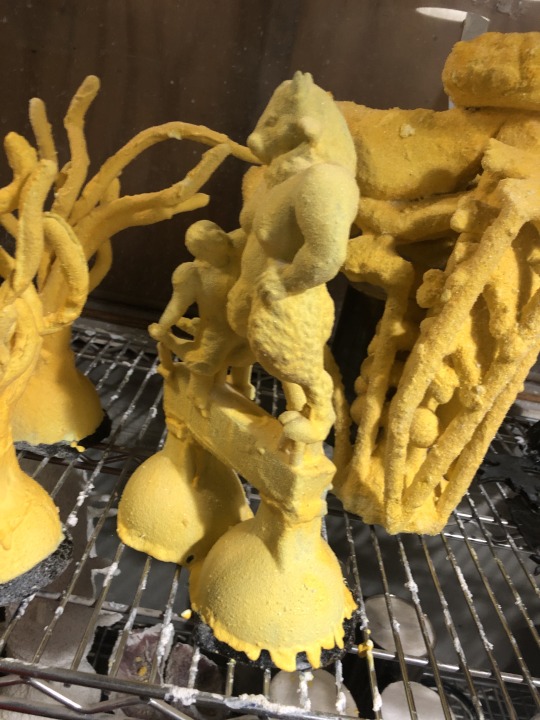
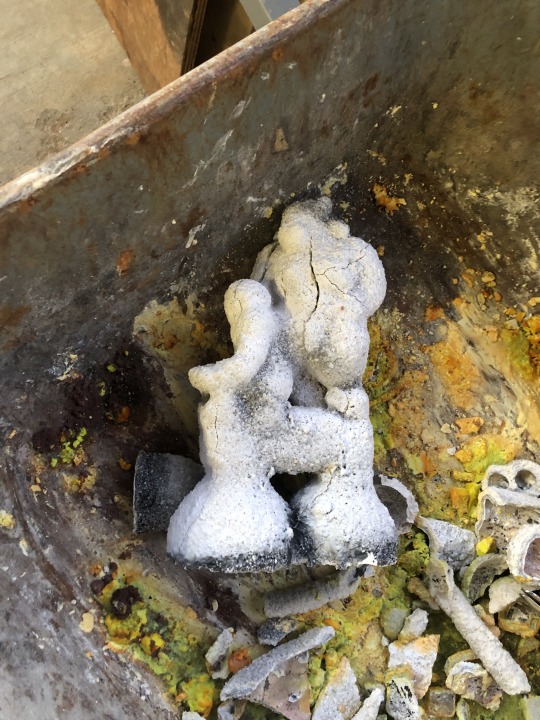

then it's all metalworking, cutting stuff off, and working with hot metal. they don't tell you about all the bronze dust and how annoying it gets wearing a respirator AND goggles. but it is for me health, me boy. here's him all cleaned up before the patina:

and then i spray him down with various chemicals to make it "patina" (aka rust) in pretty colors. wait a few days, then apply paste wax to seal it and give it that shine!
then we get what you see above!!! the blue was actually unintentional, and i'm still not super sure why it looks that way.. but it's pretty so idc <3
thanks for reading!! if you ever have any bronze/casting questions, don't hesitate to message me! <3
#artists on tumblr#bronze sculpture#sculpture#greek myth art#queer artwork#jays0n arts#trans ftm#thanks for reading if you did! i put a lot of work into this project#it's defffff not perfect but i'm proud of what i did!!#if ur curious: my next one is a werewolf w his pussy out :)
6K notes
·
View notes
Text
Custom silicone molds
Manufacturing service of customized silicone molds from a model created by 3D printing. Made in SPAIN.
Manufacturing service of customized silicone molds from a model created by 3D printing. Made in SPAIN.
Custom silicone molds, is a whole range of products as wide as the needs or imagination of the customer demands. Each order is carefully studied looking for the best process to make the model and the method to get a mold with the highest quality and ease of use. We make models according to the…

View On WordPress
1 note
·
View note
Text
SiliNOT! Testing and Review
Since I run a lot of casting workshops, I've had several people in the costuming/maker community ask me my opinion on SiliNOT!, a relatively new product advertised as a budget- and eco-friendly moldmaking alternative to silicone, urethane, and other single-use materials.
I finally bought a couple of bottles to play with, so I did a test project. My experience and findings are below! (It's not a recipe blog, but if you want to skip the play-by-play and get to the TL;DR, it's under the big "In Summary" header near the bottom.)

First, if you aren't familiar with this material, SiliNOT! is a remeltable, reusable medium for making molds. Though its exact ingredients are not disclosed, it purports to nontoxic, food-safe, and compostable. It melts in a household microwave or double boiler and solidifies at room temperature (or in a refrigerator/freezer for faster results). The website is https://silinot.com/.
(I am not an affiliate, and have no connection to this company apart from having made one retail purchase from them. I just have a lot of casting experience and like trying out new products.)
The Positive Original
I’m still in the middle of a Vincent Valentine build, so I decided to test the SiliNOT! on his custom buttons. My original is a stack of various nonporous materials: an antique (probably Bakelite) coat button, an epoxy resin dome I cast using a mold I already had in my library, and some engraved Worbla’s Pearly Art for the raised detail. The button shanks won’t be added until the final casting, so the original can be mounted flat for the moldmaking process.
Sample Worbla on the left; completed button stack on the right:
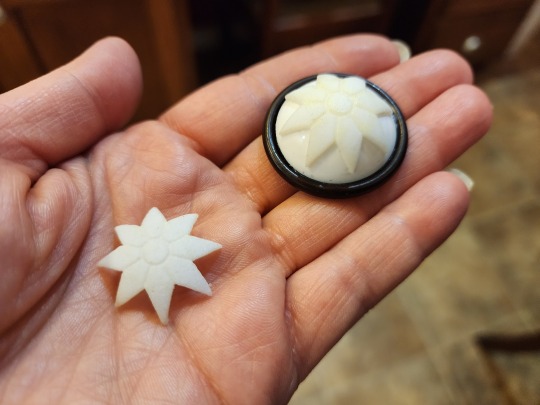
The Mold
I built the mold container the same way I do for silicone pours, with the flat back of the button fixed to a styrene plate and a cylinder (actually a small paper cup with the bottom cut off) surrounding it for the walls. The lip of the cup is sealed all the way around with Monster Clay to prevent leaks.
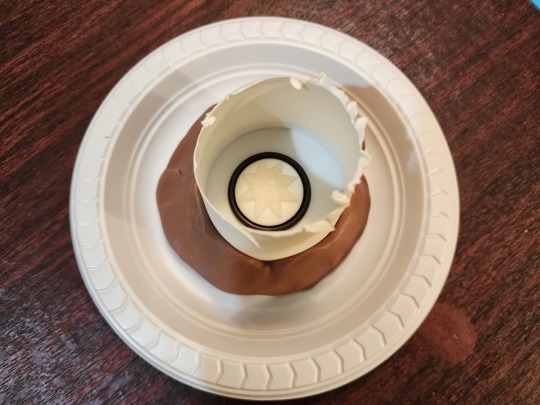
Heating and Pouring
The SiliNOT! didn’t take long at all to heat up; I did maybe four or five 20-second bursts before it was completely fluid. The bottle does get rather warm, so hand protection isn’t a bad idea. If you have heat-resistant gloves, you can use those; I was working in my kitchen (yay for nontoxic stuff!), so I just grabbed an oven mitt with a silicone grip.
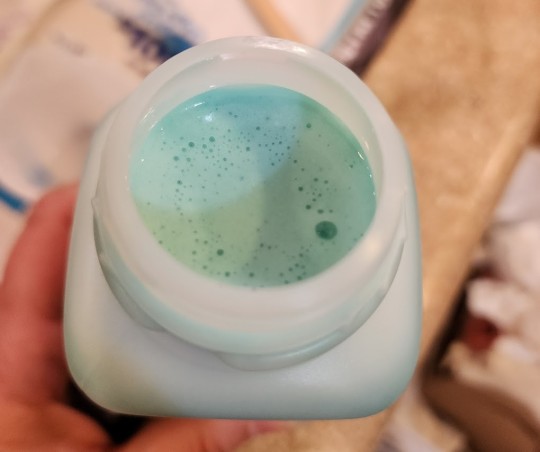
The melted SiliNOT! looks a bit like Luke Skywalker’s blue milk. It’s about the consistency of a yogurt smoothie and likes to pour in a thicker stream compared to silicone. While silicone can be stretched into a thin ribbon for delicate pours or chemically thinned with solvent for really tricky jobs, SiliNOT!'s viscosity is dependent on temperature and never seems to get quite as thin as silicone.
I’d automatically made my mold compact to conserve material (not really a concern with a reusable moldmaking material like SiliNOT!, but after using silicone for more than a decade, I’ve trained myself to be as efficient as possible), so the walls of my mold container were only about half or three quarters of an inch from my object. Because the target was so narrow, I found it difficult to accurately fill from the lowest area of the mold with the SiliNOT! The heavier pour also means more air can get trapped in or under the material.
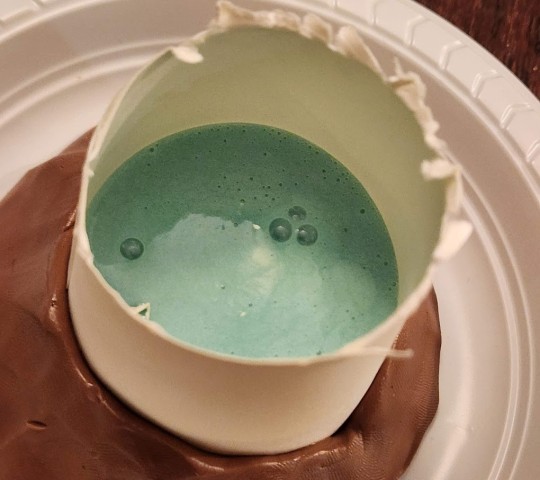
Bubbles are one of the areas in which SiliNOT! is decidedly inferior to silicone. SiliNOT! has higher viscosity, so bubbles don’t want to rise to the surface without vigorous tapping, which can distort the mold edges or affect leveling depending on your mold container. The bubbles that do make their way to the surface are difficult to pop, even when poked with a sharp implement. Heat gun degassing doesn’t have much effect.
Since the bubble surface cools and skins over quickly, I actually had to use a tool and scoop some large bubbles completely out of the mold to allow the surface to level. Critically, the SiliNOT! is opaque, so you can’t spot bubbles clinging to the surface of your original. (This is why my first mold was a reject, and I had to repour. More on that below.)
Hardening
Once the surface had set, I carefully moved the mold into the refrigerator to cool faster. Here’s another area where some types of silicone can have an advantage: I typically use fast-curing Smooth-On products (because I always have random quantities left to use up after our casting workshops), so I rarely have to wait more than half an hour for a silicone mold to cure, regardless of its size or mass.
The SiliNOT! has to chill completely before handling, though, and discharging that amount of heat requires a fair amount of time even in a cool environment. My mold was pretty small, maybe 2 1/2” wide by 1” deep, and it still took around 40 minutes to cool completely. A larger, deeper mold could hold considerably more energy in the center, and might have to be left in the freezer for a couple of hours before use.
Demolding the Original
When the mold was completely chilled, I removed it from the refrigerator and popped it off the plastic plate I’d used for the base of the mold. The texture was very different from what I’d expected: Unlike other meltable materials (Monster Clay, et al.) that have a firm surface when cool, the SiliNOT! remains tacky, which means it promptly collects any debris that crosses its path. In my case, this meant I had to pick dog hair off the surface throughout the casting process (and I don’t want to think about what would happen if glitter had contaminated the work space).

I’d used a paper cup for my mold walls, which usually works fine with fast-curing silicone. But the SiliNOT! must have a high oil content, because the cup absorbed some of it:
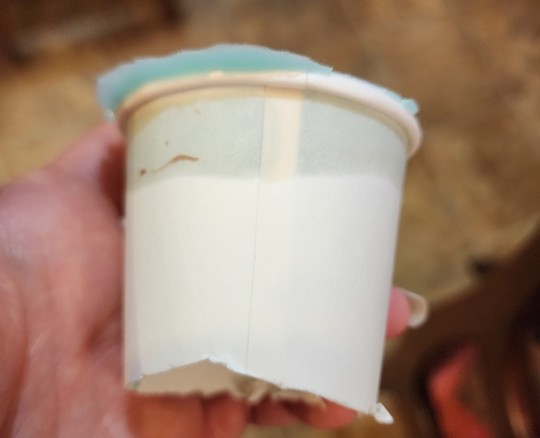
Lesson learned; use only nonporous containers with this stuff.
The SiliNOT!! really wanted to cling to the edges of my original, so I had to go slow at first to avoid tearing the thin flanges of the mold off. However, it did demold nicely from the smooth surfaces, and preserved texture very well. You can see the Worbla pebbling and the engraving channels clearly in the mold (as well as some dust and dog hair, because I made the mistake of setting it down briefly):

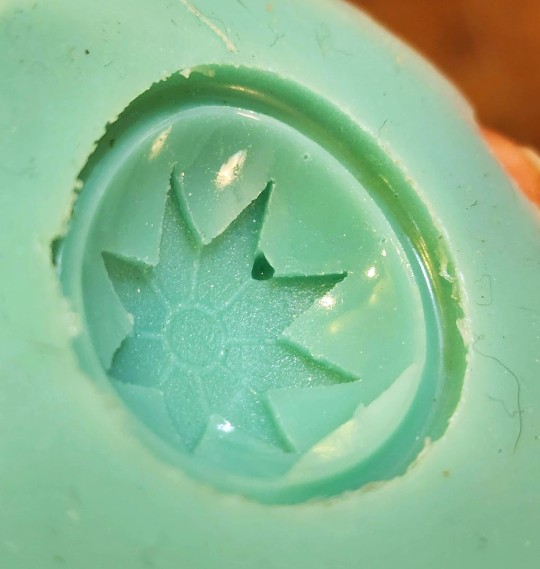
Unfortunately, as you can see, a large bubble had stuck to my original and created a pit in the mold, so I decided to do a second mold pour. I figured I’d tear up the failed mold and put the pieces back in the bottle to remelt… and discovered I couldn’t. The mold would stretch and twist, but not tear. It also seemed to return to its original shape relatively faithfully. Here’s a video of me manhandling the mold:
As you can see, the SiliNOT! has much better stretch and recovery than many silicone products (there are silicones that stretch well -- some of the Dragon Skin products come to mind -- but they’re not typically marketed for moldmaking). This means it’s likely well suited to casting objects with moderate undercuts or oddly-shaped bits that need the mold to stretch during demolding.
You can cut the SiliNOT! easily with scissors, which is the recommended method for getting it back in the bottle when you’re ready to remelt.
Take Two
Using what I’d learned from the first pour, I did the second one inside a hard plastic ramekin. This gave me a bit more room to pour into the floor of the mold, reducing the bubble risk, and also eliminated the porous paper cup that had absorbed oil. I still had the issue with bubbles that didn’t want to pop, but there were fewer of them this time.
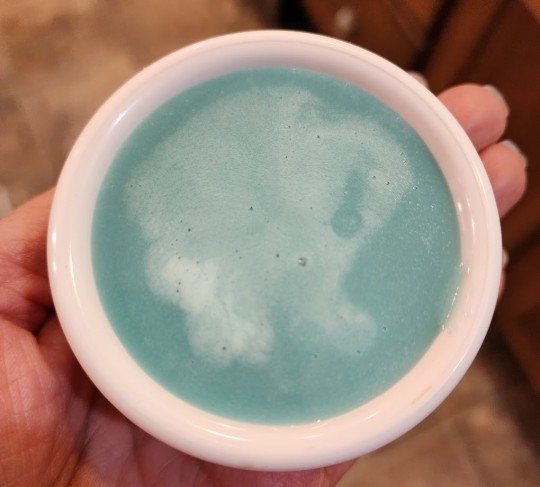
The ramekin made for a much cleaner mold, buuuuut there was ANOTHER BUBBLE right in the middle of the design. >.<
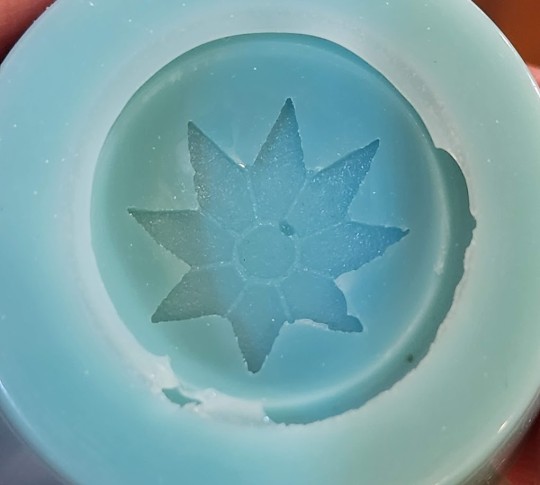
Take Three
Lather, rinse, repeat. Or in this case, melt, pour, chill.
This time I heated the SiliNOT! as much as I dared and did the absolute slowest, narrowest pour I could manage, giving the air extra time to escape as the mold was filled from the bottom. The risk with stringing out the pour like this is that in a thinner stream, the heat escapes faster, leading to uneven viscosity as the liquid fills the mold. I don’t think that’s a major problem for this particular piece, but it’s something to pay attention to as regards leveling and degassing, especially for larger molds that will take longer to fill.
The result of pour three:
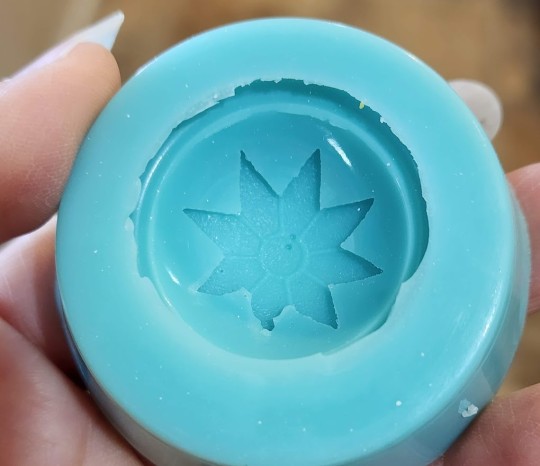
/siiiiigh/ Well, at least the bubbles are smaller, this time. They may not show up enough to matter in the final cast. I’ll give it a try.
Casting
I had leftover workshop resin that was getting on toward the end of its shelf life, so I used Smooth-On Smooth-Cast 300 for my initial resin trial. It’s an opaque white resin with about a 10-minute cure time (the fast turnaround is why we use it for workshops).
Before pouring, I had to do a little mold cleanup where the SiliNOT! had managed to sneak under the edge of the Worbla (I think I’d loosened the corner of the star from prying it out of so many molds), but since the SiliNOT! stretches so well, it was pretty easy to invert it to get little scissors down into the bottom of the depression.
For the first cast, I didn’t use anything but the resin in order to get a baseline. Ideally I’d like to cold cast or dye the resin so I don’t have to worry about paint chipping, but since I’m doing a trial here (and need multiple buttons anyway) I figured some plain white extras wouldn’t hurt.
So, my first cast…

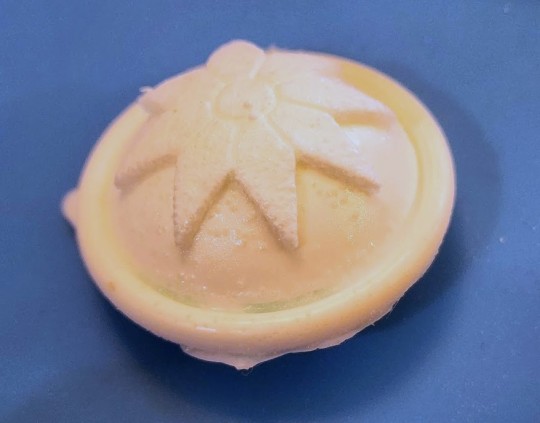
…smacked into a big problem, which I probably should have seen coming: The resin I’m using is a fast cure formula, which means it discharges a fair amount of heat as it's going through that rapid chemical reaction -- enough heat to melt the SiliNOT!, as it turned out. When I tried to demold it (after giving it a few extra minutes beyond label time to be sure it was done), the surface of the mold had melted to the resin and even embedded itself in a few places. It’s difficult to see the resin detail in the photos (my camera went into white balance panic mode with all the shades of white and blue), but you can see how pitted the formerly-smooth mold surface is.
In fairness to the SiliNOT!, the bottle does say that you should put the mold in the freezer for half an hour before casting high-temperature materials. But I assumed high-temperature material was something like candle wax or melted chocolate, rather than ordinary resin. (And the mold had just come out of the refrigerator.)
So, on to pour FOUR of the SiliNOT! mold…
Take Four
NGL, this is getting a little old. >.<
Fourth mold definitely needed some cleanup around the edges, and there are still a couple of tiny bubbles I can’t seem to get rid of, but it’s good enough for a test. (I’m starting to despair of using these for actual production, given how many times I’ve had to redo the molds because of bubbles...)

Deep in the recesses of my basement, I found some transparent epoxy resin with a 24-hour cure time -- much slower and lower-temperature than the Smooth-Cast. Since it cures clear, I went ahead and mixed in some metallic powder pigment on the off chance that I get a usable button out of this one. I had excess resin after mixing, so I poured that into my first mold, which has a bubble in the design but is otherwise fine. Two test pieces are better than one, right?
Results
Here are the results of the slow-curing resin out of mold #4:
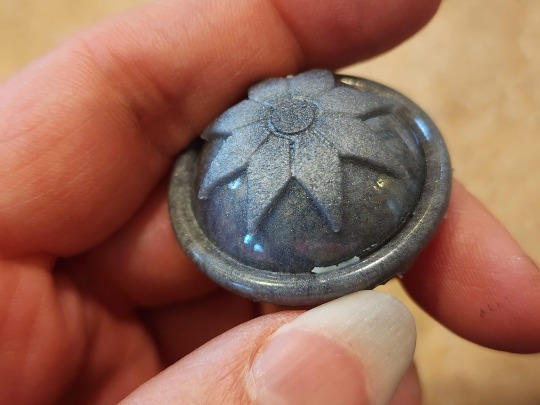
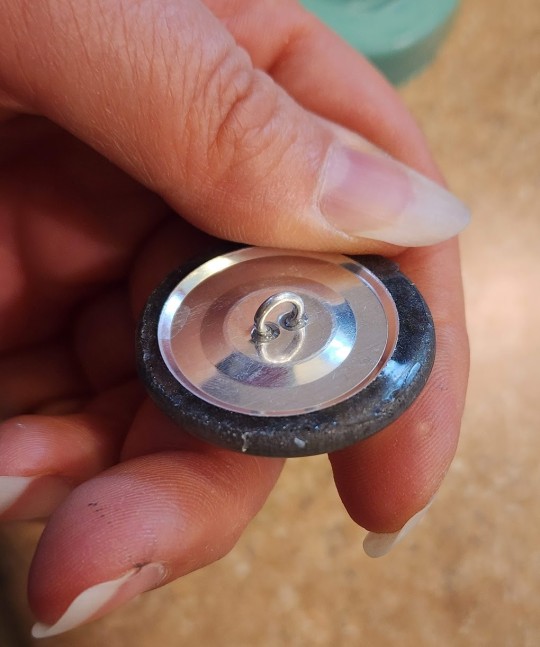
Finally, a (mostly) clean cast!
As you can see, the detail reproduction is excellent -- certainly on par with the pulls from the silicone mold I ended up making while waiting on this set to cure (purely for time reasons; I couldn’t afford five days to cast the buttons using slow-curing resin, and with a silicone mold and fast-curing resin I could get them all done within a couple of hours).
However, you can also see a few spots where bits of the SiliNOT! embedded themselves in the final cast. Part of that may be due to design flaw in the original; I didn’t want to glue anything permanently to the antique button, and that resulted in a tiny gap between the button and the resin hemisphere. Silicone has enough strength to resist tearing out in that kind of area, but apparently the SiliNOT! doesn’t. The bits of mold around the outer edge seem to have stuck just to be difficult, as there was no structural reason for those to have become embedded in the resin. This means the mold could be damaged by successive casts, reducing its usable life and accuracy.
Still, the mold definitely produced decent results for a first cast, and a different shape might not have had as much of a problem with tearing off mold parts. The slow-curing resin is a bit of a limitation, but not a unique one (I use this same epoxy resin for any glass-clear casts I do, and only use the Smooth-Cast 300 for opaque items or things I need very quickly). I don’t personally use UV resin, but I’d be curious to learn how it performs with the SiliNOT!
IN SUMMARY:
Here’s the TL;DR on SiliNOT!
Pros
Cost effectiveness. This is the most obvious advantage of SiliNOT! over silicone; it’s (theoretically) infinitely reusable, and even with natural attrition/inevitable contamination from use, you can likely get over a hundred pours out of a bottle. That's a lot cheaper per use than silicone.
Non-toxicity. SiliNOT! is touted as food contact-safe, so you don’t have to panic if you get it on your skin or kitchen counters. While platinum-cure silicone is also relatively harmless (some varieties are labeled for food or life casting), other common moldmaking materials such as tin-cure silicone or urethane are not. (NOTE: Since the company is very hush-hush about what actually makes up the SiliNOT! secret formula, I do not know if it might release any vapors or fumes that would be irritating or harmful to pet birds. In general, I advise not doing any kind of casting around birds.)
Eco-friendliness. This is the biggest draw for me personally: Given the number of casting workshops I run and all the things I sell commercially, I have constant guilt about the amount of waste I generate for creative projects. In most areas of life I’m an aggressive reduce/reuse/recycler and try to use organic materials instead of synthetics whenever possible, so a mold that’s reusable and compostable is very appealing.
Ease of use. It’s honestly pretty hard to mess this up -- just microwave according to the directions and pour. No measuring, no A/B mixture, no concerns about chemical contamination from latex or sulfur, etc.
Shelf life. Unlike silicones, which have a shelf life of anywhere from six months to three years depending on storage conditions, the SiliNOT! purports to be shelf-stable. It's compostable, so don’t bury it in your yard, but otherwise it appears that it could be kept on hand for years.
Cons
Bubbles. Honestly the most irritating thing about this stuff for me. I’m used to being able to see bubbles forming as I pour, tap them to the surface, and remove them. The fact that I poured four molds of the same object and never once got one without bubbles is super irritating.
Stickiness. I’m not a big fan of the tacky surface texture, and while I haven’t done any cold casting yet, I can imagine that it would be very difficult to clean out any pigment or mica powder that got where you didn’t want it. I probably wouldn’t use this for any kind of cold casting that required isolated colored areas or changing colors between casts.
Set time. The SiliNOT! may take longer to cool than a fast silicone would to cure when dealing with larger molds, so it’s not ideal for projects with a really tight turnaround. (But cosplayers would never be casting something the night before a con, right? We always plan ahead and never, ever procrastinate!)
Library life. The SiliNOT! may or may not structurally degrade over time the way urethane, latex, and tin cure silicones do, but I noticed even in my very limited casts that it was prone to having tiny bits of the mold (particularly at edges) stick and pull off. While I keep most of my platinum silicone molds for years and reuse them, I don’t feel that the SiliNOT! molds would hold up to repeated casting, and they’re far more sensitive to ambient temperature, so they’re probably best used for short term only. (I also wonder about the possibility of oil leaching out in long-term storage.)
Comparative Ranking
Ranking it against other mold-making materials, I’d place SiliNOT! below platinum-cure silicone in terms of performance, but maybe somewhere in the neighborhood of urethane and tin-cure silicone. It's definitely superior to latex. (Though to be honest, I'd rank Play-Doh above latex. I hate working with that stuff.)
Factoring in cost and environmental impact, it beats out urethane and tin-cure silicone. I'm still not sure if I'd rank it above platinum-cure silicone, though... Silicone costs much more and isn't eco-friendly, but the performance and lifespan is significantly better, so it still makes more sense for some projects.
Alginate is another type of material entirely, but in some ways SiliNOT! is comparable to it -- both are more cost-effective than silicone, both are biodegradable, both are skin safe, and both have long shelf lives. But SiliNOT! is easier to use for beginners than alginate, which has to be mixed to the right consistency and has an extremely short lifespan once poured.
Overall, I would recommend SiliNOT! for:
People who want accurate, non-shrinking molds but don’t have the budget for platinum-cure silicone
People who are committed to eliminating waste from single-use materials, and are willing to trade off a little performance for a more eco-friendly material
Projects with smooth surfaces and no indentations/sharp edges/undercuts where bubbles might stick (e.g. cabochons; simple geometric forms)
Projects where you need only one or two casts of something, rather than many casts from the same mold
Casting oddly-shaped pieces around which the mold needs to stretch in order to demold
Use with slow-curing resins that do not generate much heat
I would NOT recommend SiliNOT! for:
Extremely complex or detailed pieces, or pieces with a lot of surface texture that bubbles might stick to
Two-part molds
Projects requiring many identical casts out of the same mold
Molds that you intend to add to your library for future or repeat casting
Use with fast-curing resins, melted wax, melted Monster Clay, or any other material that emits heat
Cold casting with precise color application
My Overall Opinion
It's... okay? I will almost certainly keep SiliNOT! in my toolkit for certain specific applications. It's MUCH cheaper over the long term, I love the idea of recycling mold material, and there are some projects for which it will likely perform very well (those listed in the above bullet points). I will also admit that three days of working with it does not constitute a comprehensive familiarity with the product, and it might be the sort of thing that you get better at working with after more practice. (Just learning how to eliminate bubbles would go a long way toward making me adopt this for more projects!)
However, I don't quite buy the "better than silicone" tagline. It's definitely more difficult to get a perfect result, and there are some projects for which platinum-cure silicone is always going to be more reliable (e.g. high-temperature casting, mass production, large-scale life casting).
For those looking for a recommendation of whether or not to buy, I'd say look at your project budget and the applications for which you're going to be making molds, and let those factors guide which mold material you go with. People doing some kinds of projects are likely going to find this a godsend, while those doing different projects would probably hate working with it.
31 notes
·
View notes
Text
Treasure Rocks
Over at Ghost of the Doll you can see two more series of Treasure Rocks that were never produced: Glitter Gems and Etched Gems. Well, you can’t really see them; the only photo is of rocks that haven’t yet been turned into jewels! So we can only imagine what these gems would have looked like.
Or...
Or you could get some silicone mold maker, cast your treasure rocks, and make your own! Check out my homemade Glitter Gems!
They’re a little derpy; the top of the molds aren’t perfect and it took some experimentation to get the right glitter colors, but it’s more Treasure Rocks!

I am just so delighted, I have tried to cast my Treasure Rocks like five different times with various moldmakers and always got terrible results and finally I got it to work! Glitter Gems live!

The sparkle!
I don’t think I could manage Etched Gems. Even if my sculpting skill could make something to cast, silicone and resin probably aren’t up to it. But... hmm...
Glow in the dark glitter exists.
6 notes
·
View notes
Photo

On today’s tutorial, on my YouTube channel! Making a floral silicone mold and creating some resin jewelry pieces!😃 @letsresin #letsresin #siliconemold #moldmaking #shrinkplastic #floral #flowers #leaves #jewelry #resin #resincrafts #earrings #ring https://www.instagram.com/p/Cjqa4kwNJSd/?igshid=NGJjMDIxMWI=
#letsresin#siliconemold#moldmaking#shrinkplastic#floral#flowers#leaves#jewelry#resin#resincrafts#earrings#ring
2 notes
·
View notes
Text

We are #professional #customization and #oem soft #PVC #rubber #silicone products #factory . We can offer #drawing , #design , #moldmaking , #sampling , and production #services . These products are commonly used in the soft PVC,rubber, silicone, garment #accessories , footwear, phone , #promotionalgifts items and so on. Such as: #pvclabel , pvc #keychain , pvc #patch , pvc #fridgemagnets , pvc #wristband , pvc #pendrive , pvc #cup #coaster , pvc bar #mat , pvc watch #strap , pvc #slippers , pvc #sole , pvc #zipperpuller , pvc #promoton items; silicone label, silicone #badge , silicone #mobile case, silicone #usb #case , silicone wristband, silicone zipper puller, etc.
Advantage(place order from us):
1.Factory direct supply,cheaper price
2.OEM Support, ODM available
3.3-5 Days fast supply
4.Sample test available
5.different colors and length can customized
6.Box logo can do as requested
For more details, please contact Debby:
[email protected]
#Soft pvc#3D#soft pvc cup coaster#customized#OEM#Custom Soft PVC fridge magnets#rubber zipper puller#pvc zipper puller#pvc patch Heat-Transfer#pvc label heat transfer#soft pvc keychain double side#soft pvc usb case#soft 3d pvc pen drive#OEM soft 3d pvc usb flash drive#double side keychain#soft pvc double side keychain#double side pvc keychain#pvc figure#3D pvc keychain#silicone tag#silicone badge#silicone label#rubber keychain#pvc Morale Patch#Pvc Velcro Patch#velcro pvcpatch#soft keyring#pvc key chain#soft pvc keychain
1 note
·
View note
Note
At this point I’d be happy to get a flower figure
She must have enough fans by now to at least get a garage kit I know 3D sculpting might be harder but with 3d printers these days hopefully it’d be possible I think I saw some clay figures on Etsy for like 50 bucks which isn’t the worst but I’d prolly feel bummed spending that much on something fan made and it ends up half broken in the packaging delivery lol
I have actually wanted to sculpt a flower figure for a while, i made the flower art doll just so i could have something. it's a long term goal of mine
i havent seen the etsy figures, very curious if you can send. i don't want to make promises but i might be able to assess the likelihood of it being damaged from sight LOL bc ive kinda been at this for a long time. some sellers may also offer buyer protection/refunds--If the figure charms you, don't be discouraged! But if you're not in love with it, i get not wanting to invest.
i struggled for a long time with making sufficiently sturdy sculpts bc a lot of polymer clay is brittle, but there's a lot of things you can do to improve outcomes--armatures, softer and sturdier clays, eliminating air bubbles, etc. For the record, most small trinkets, charms, and sculptures w/o many protrusions will be totally fine.
the barrier to flower GK is that i haven't ever sculpted for production, only OOAK, and i'm pretty insistent on doing hand sculpting.
i'd been gearing up to work on a prototype since i think i have sufficient context and materials for how GKs are hand-sculpted (it took like 3 years to feel confident in this though). because of joblessness and moving into a new place w/o a clear workstation it's been like several months if not a year since i last did any sculpting projects; not planning on it until conditions improve. i do have all the materials though, even the silicone for moldmaking!
digital sculpting and 3d printing make it all much easier; part of me feels i should learn it just to get ahead, but i'm just really stubborn about it. i like the feeling of sculpting by hand, dammit...!!
i don't really want to get my hopes up right now but i might be able to get a job at a place with 3d printers; if that's the case, perhaps i'd be more amenable to learning.
in essence... you're not the only one who wants a flower gk, and you are in fact talking to One of the people who wants to make it happen... though admittedly i'm not confident it'll come to fruition. Shrug !
hopefully someday, whether by my hand or someone else's, we get what we want...
#indexed post#Also while talking about dreams of anime figures all for naught#Anyone wanna pour one the fuck out for the flip flappers figures? 🫡
0 notes
Text
How To Choose The Right Carbide Inserts

Carbide inserts are precision-made cutting tools that are used to machine metals. They are available in many sizes, shapes, and grades to meet your specific machining needs.
Inserts are identified by the combination of numbers and letters which refers to the Turning Tool ISO number system. This system allows for easy identification of the proper carbide insert.
Material
Carbide inserts are useful tools in a machinist’s toolbox. They are available in a range of grades and coatings that match the specifications of the toolbox.
The majority of inserts currently in the market are coated with thin films of titanium nitride, silicon nitride, or tungsten carbide. This coating improves the hardness of carbide inserts and also acts as a barrier to heat.
This helps protect the cutting edge from the possibility of oxidation. This makes it stronger and lasts for longer.
Carbide inserts are available in various sizes and shapes. This lets machine operators choose the appropriate insert to complete their task.
Geometry
The chip breaking and machining performance of carbide inserts is determined by their geometry. It also influences the cutting force and the finish of the surface of the tool.
Based on the application of machining, the grade, shape (point angle) the size, radius and entering (lead) angle of an indexable insert must be selected to achieve good chip control and machining performance.
Carbide inserts are available in a range of sizes and shapes to machine a wide range of materials. There are many inserts to choose from, such as rectangular, square and the rhombic.
The positive angled, share cutting edge of the insert helps reduce cutting forces, and also improves the performance of machining. The insert helps prevent the buildup of edges after machining and increases the edge's reliability.
Grade
You must select the appropriate grade for your job when choosing pcbn turning inserts. The reason is that insert grades impact the cutting conditions and the time of the tool.
Carbide is a durable, hard substance that is chemically stable. It is resistant to abrupt stress from thermal alternation or oxidation as well as diffusion. It also resists deformation and wear without being damaged too rapidly.
Moldmakers continue to look into more difficult nickel or cobalt-based substances in an effort to improve mold life. They are extremely tough and machining them at high speeds may be challenging.
The answer is to apply an appropriate coating that can increase wear resistance and tool life. Luckily, the latest micrograin carbide grades (0.4fm) with PVD TiAlN coatings have been specifically designed for the machining of pre-hardened steels over 54 Rc.
This can help improve the efficiency of cutting metal while also meeting the environmental requirements. These grades are excellent for a variety of materials, including sticky austenitic stainless and duplex steels.
Finish
The surface finish of the material that is being machined will determine what kind of cbn turning inserts is employed. The correct insert will assist in preventing damage to the tool insets and the workpiece.
Coatings on carbide inserts can significantly enhance the wear resistance and life of these cutting tools. Various coatings are available including CVD, PVD, Nitride, and Cermet.
A coated insert could be helpful when working with steels and cast irons. This will help cut cycles and boost profitability.
A cermet grade that is coated with a coating can help to increase the speed and feeds that will enable more efficient machining. This is especially useful when machining super alloys or titanium alloys.
Choose the correct insert size when selecting the correct insert. It will be determined by the required length of the machining, the angle of the tool holder and the specifications of the machine.
0 notes
Text

Comprehensive Guide to Baby Life Casting: Capture Precious Moments
life castings are not just about creating a mold; they are about capturing moments of joy, growth, and the deep emotional bonds of family in a form that lasts a lifetime.
#how to make molds#baby life casting#mold making#alginates#alginate#life casting#moldmaking#resin casting#silicone mold#polyurethanes#siliconerubber#resincasting
0 notes
Text
How To Choose The Right Carbide Inserts

Carbide inserts can be used to make metals. They are available in a range of sizes, shapes and grades to suit particular machining needs.
Inserts are identified by the combination of letters and numbers that are linked to the Turning Tool ISO number system. This allows for simple identification of the correct carbide insert.
Material
Carbide inserts are an essential tool in the toolbox of a machinist. You can pick from a range of grades and coatings depending on the use.
Most of the inserts that are available today are coated with a thin film of tungsten carbide silicon nitride or titanium nitride. This coating enhances the durability of carbide inserts as well as acts as a heat barrier.
It also ensures the cutting edge is shielded from the oxidation. This increases its durability and prolongs its life.
Carbide inserts are available in various sizes and shapes. This makes it simple for engineers and machinists alike to pick the appropriate insert for their job.
Geometry
The geometry of the carbide insert determines the breakage of the chip and cutting performance. The surface finish of the tool and cutting force are also influenced by the geometry.
Based on the application of machining and the machining application, the grade, shape (point angle) the size, radius, and the entering (lead) angle of an insert that can be indexed should be chosen to ensure good chip control and machining performance.
Carbide inserts are available in a range of sizes and shapes to fabricate a range of materials. These include diamond, rhombic, square and rectangular inserts.
The insert's positive-angled share-cutting edge reduces cutting forces and enhances the performance of machines. This insert stops the accumulation of post-machining edges and improves the durability of the edge.
Grade
You should select the correct grade for the application you are choosing diamond inserts. This is because insert grades influence cutting conditions as well as the tool life.
Carbide is a strong, tough material that is chemically stable and resists abrupt thermal alternating stress, oxidation , and diffusion. It also resists wear and deformation without being damaged too rapidly.
Moldmakers continue to explore more durable nickel and cobalt-based materials to increase the lifespan of molds. They can be extremely hard and processing them at high speeds could be difficult.
It is possible to add a coating to increase wear resistance and the life of your tools. Fortunately, new micrograin carbide grades (0.4fm) that have PVD TiAlN coatings are specifically developed for machining steels pre-hardened to that exceed 54 Rc.
This allows metal cutting to be more economically efficient, while also complying with environmental standards. These grades offer improved edge-line security as well as reliability that is ideal for a variety of materials, such as the sticky austenitic stainless steels as well as stainless steels with duplex.
Final
What kind of pcbn turning inserts is used will depend on the finish of the material. Choosing the right insert can protect the tool from damage insets, the machine, and the workpiece.
Coatings on carbide inserts can dramatically increase the wear resistance and longevity of the cutting tools. Different coatings are available such as CVD, PVD and Nitride, and Cermet.
For casting irons and steels, a coated insert is useful. This will help cut cycles and boost profitability.
A cermet grade that is coated with a coating can help to achieve higher speeds and feeds, which enable more efficient machining. This is especially useful for machining super-alloys or titanium alloys.
When choosing the correct insert, choose one that is of the proper dimension for the application you're using it for. It will be determined by the required length for machining and the angle of insertion of the tool holder, as well as the machine's specifications.
0 notes
Text
#moldmaking#resin mold#diy silicon mold#jewelry mold#mid century modern#handmade mold#silicon mold#3d printed#jewelry#printed3djewelry
0 notes
Text
A heads up for the cosplay community that SiliNOT! (a reusable, compostable silicone alternative for moldmaking) is having a buy-two-get-one-free sale, so if you want to try out a new material, it's a good time to buy!
I haven't used this myself yet, but I've just placed an order for both the mold-making medium and the skin SFX version, and will report back with a review once I've had a chance to play with it. I love working with silicone, but I am all in favor of more eco-friendly options, so hopefully this will work well!
13 notes
·
View notes